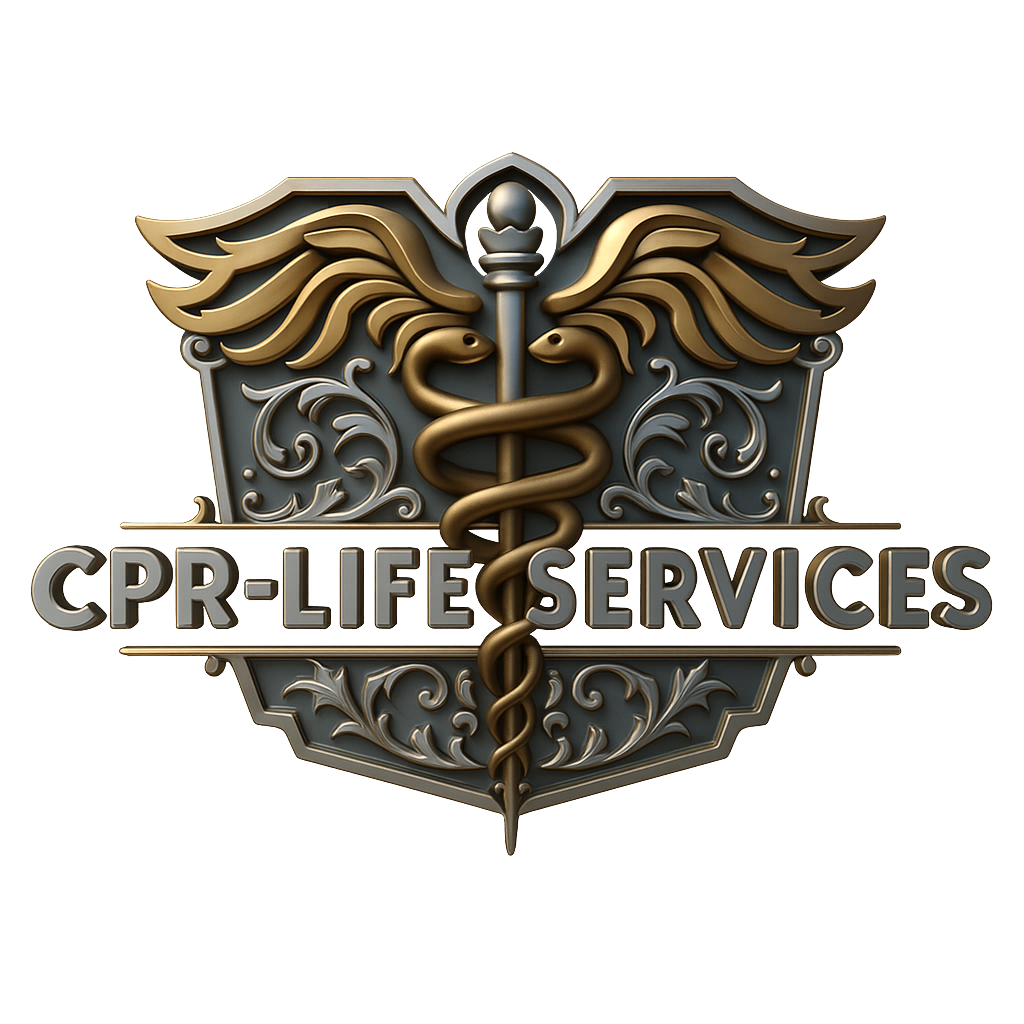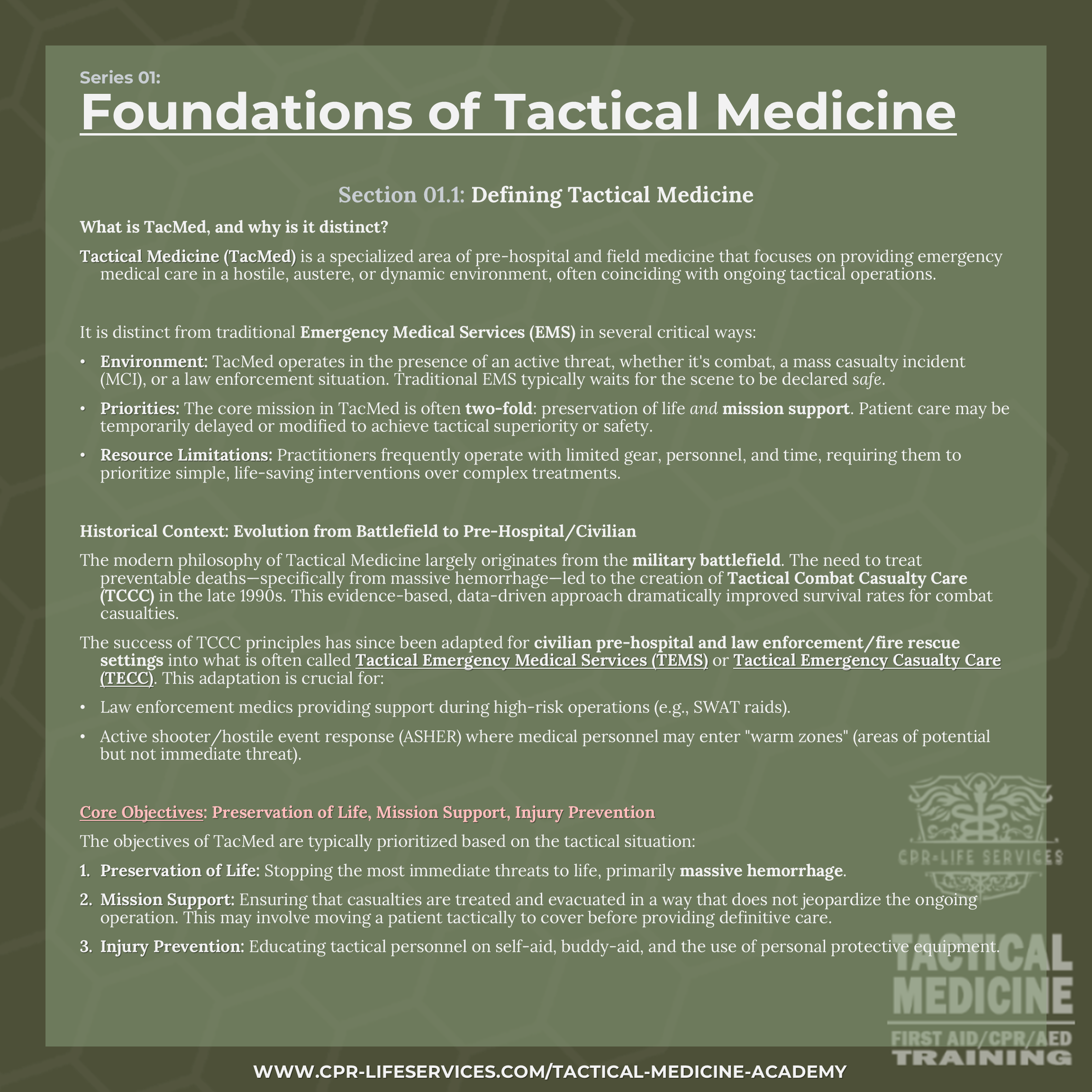Defining Tactical Medicine
What is TacMed, and why is it distinct?
Tactical Medicine (TacMed) is a specialized area of pre-hospital and field medicine that focuses on providing emergency medical care in a hostile, austere, or dynamic environment, often coinciding with ongoing tactical operations.
It is distinct from traditional Emergency Medical Services (EMS) in several critical ways:
Environment: TacMed operates in the presence of an active threat, whether it's combat, a mass casualty incident (MCI), or a law enforcement situation. Traditional EMS typically waits for the scene to be declared safe.
Priorities: The core mission in TacMed is often two-fold: preservation of life and mission support. Patient care may be temporarily delayed or modified to achieve tactical superiority or safety.
Resource Limitations: Practitioners frequently operate with limited gear, personnel, and time, requiring them to prioritize simple, life-saving interventions over complex treatments.
Historical Context: Evolution from Battlefield to Pre-Hospital/Civilian
The modern philosophy of Tactical Medicine largely originates from the military battlefield. The need to treat preventable deaths—specifically from massive hemorrhage—led to the creation of Tactical Combat Casualty Care (TCCC) in the late 1990s. This evidence-based, data-driven approach dramatically improved survival rates for combat casualties.
The success of TCCC principles has since been adapted for civilian pre-hospital and law enforcement/fire rescue settings into what is often called Tactical Emergency Medical Services (TEMS) or Tactical Casualty Care (TCC). This adaptation is crucial for:
Law enforcement medics providing support during high-risk operations (e.g., SWAT raids).
Active shooter/hostile event response (ASHER) where medical personnel may enter "warm zones" (areas of potential but not immediate threat).
Core Objectives: Preservation of Life, Mission Support, Injury Prevention
The objectives of TacMed are typically prioritized based on the tactical situation:
Preservation of Life: Stopping the most immediate threats to life, primarily massive hemorrhage.
Mission Support: Ensuring that casualties are treated and evacuated in a way that does not jeopardize the ongoing operation. This may involve moving a patient tactically to cover before providing definitive care.
Injury Prevention: Educating tactical personnel on self-aid, buddy-aid, and the use of personal protective equipment.
Section 01.1 (Graphic)

